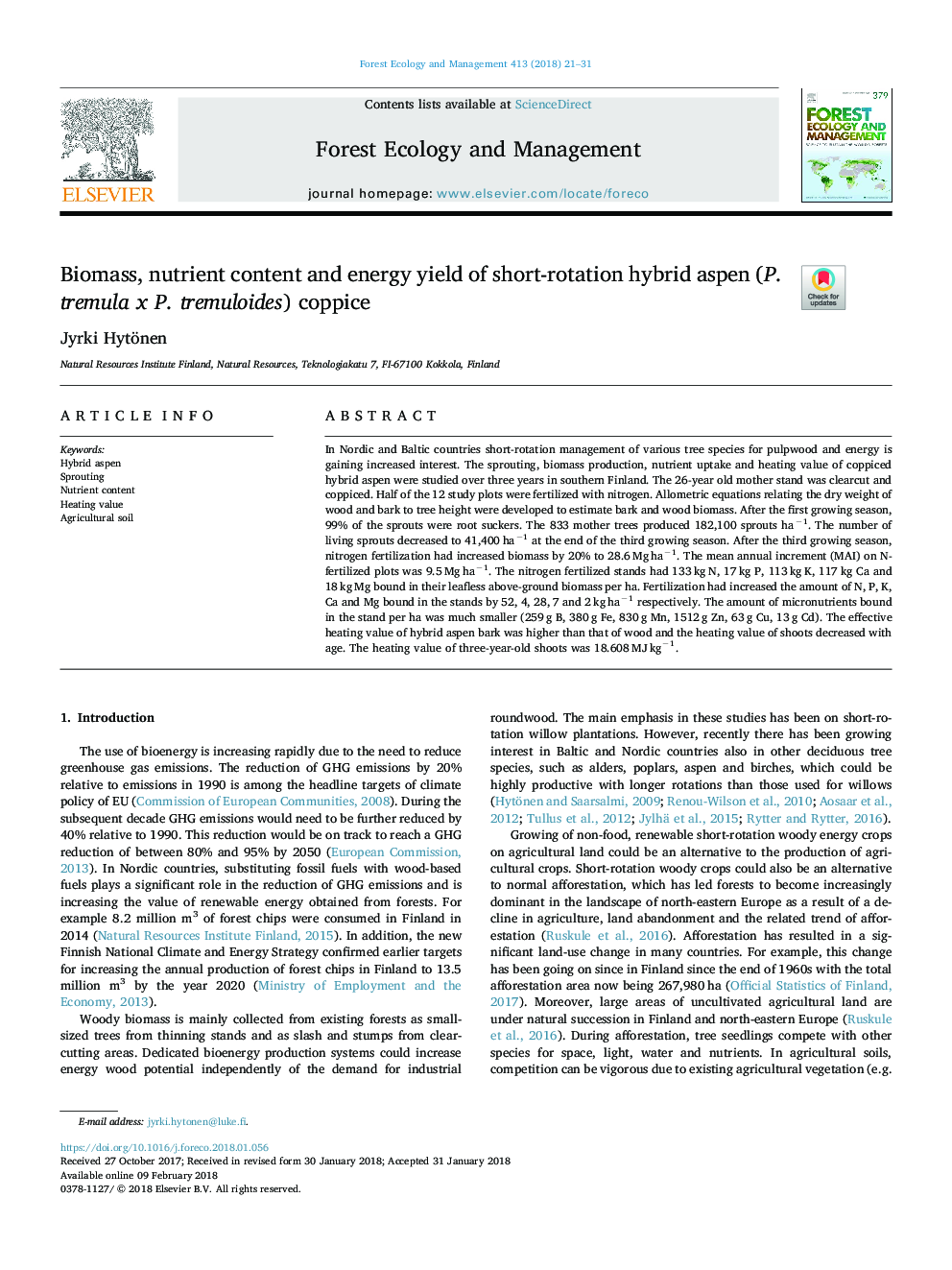| Article ID | Journal | Published Year | Pages | File Type |
|---|---|---|---|---|
| 6541793 | Forest Ecology and Management | 2018 | 11 Pages |
Abstract
In Nordic and Baltic countries short-rotation management of various tree species for pulpwood and energy is gaining increased interest. The sprouting, biomass production, nutrient uptake and heating value of coppiced hybrid aspen were studied over three years in southern Finland. The 26-year old mother stand was clearcut and coppiced. Half of the 12 study plots were fertilized with nitrogen. Allometric equations relating the dry weight of wood and bark to tree height were developed to estimate bark and wood biomass. After the first growing season, 99% of the sprouts were root suckers. The 833 mother trees produced 182,100 sprouts haâ1. The number of living sprouts decreased to 41,400â¯haâ1 at the end of the third growing season. After the third growing season, nitrogen fertilization had increased biomass by 20% to 28.6â¯Mgâ¯haâ1. The mean annual increment (MAI) on N-fertilized plots was 9.5â¯Mgâ¯haâ1. The nitrogen fertilized stands had 133â¯kgâ¯N, 17â¯kg P, 113â¯kgâ¯K, 117â¯kg Ca and 18â¯kgâ¯Mg bound in their leafless above-ground biomass per ha. Fertilization had increased the amount of N, P, K, Ca and Mg bound in the stands by 52, 4, 28, 7 and 2â¯kgâ¯haâ1 respectively. The amount of micronutrients bound in the stand per ha was much smaller (259â¯g B, 380â¯g Fe, 830â¯g Mn, 1512â¯g Zn, 63â¯g Cu, 13â¯g Cd). The effective heating value of hybrid aspen bark was higher than that of wood and the heating value of shoots decreased with age. The heating value of three-year-old shoots was 18.608â¯MJâ¯kgâ1.
Related Topics
Life Sciences
Agricultural and Biological Sciences
Ecology, Evolution, Behavior and Systematics
Authors
Jyrki Hytönen,
